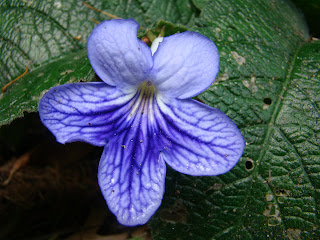
I love, and often think about that old story to explain systems-thinking - that a butterfly languidly flaps its wings in a hot, tropical Rainforest of South America, setting in motion an energy that ripples across the world and, amongst other things, results in the hat flying sharply off the head of a man on a cold, blustery Oxford Street, London.
Every time, it makes me think about my own smile. If I smile now, and send out a ripple of smiling energy, might a husband in Malawi hug his wife? Might a child in Ethiopia eat a meal? Might a grandmother in India enjoy a belly laugh? Might a girl in Cambodia get a scholarship to finish school?
Who knows the power of my smile?
I remember that every time I love Life - every time I admire a flower, delight at a stick insect, save a worm, plant a tree, stop and acknowledge a squirrel, regard a mushroom as special, feel lucky and excited because I saw a whale - I am sending out a ripple that encourages more Life somewhere on this extraordinary planet, in some extraordinary way.




